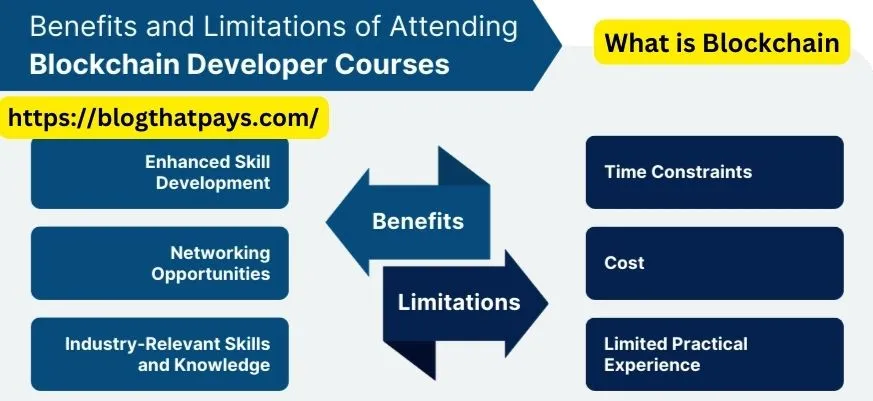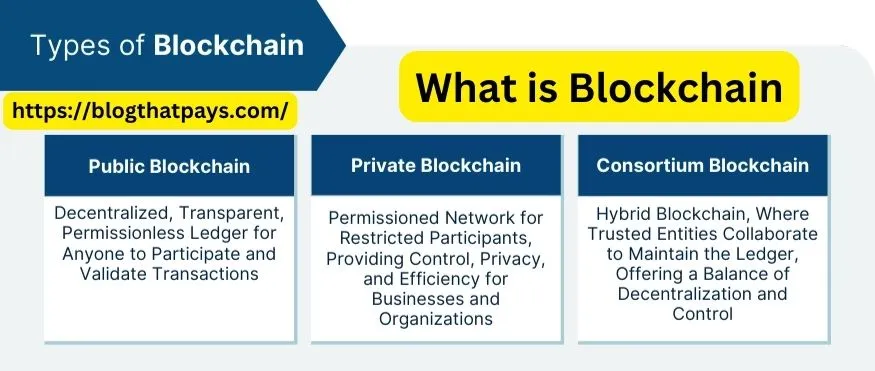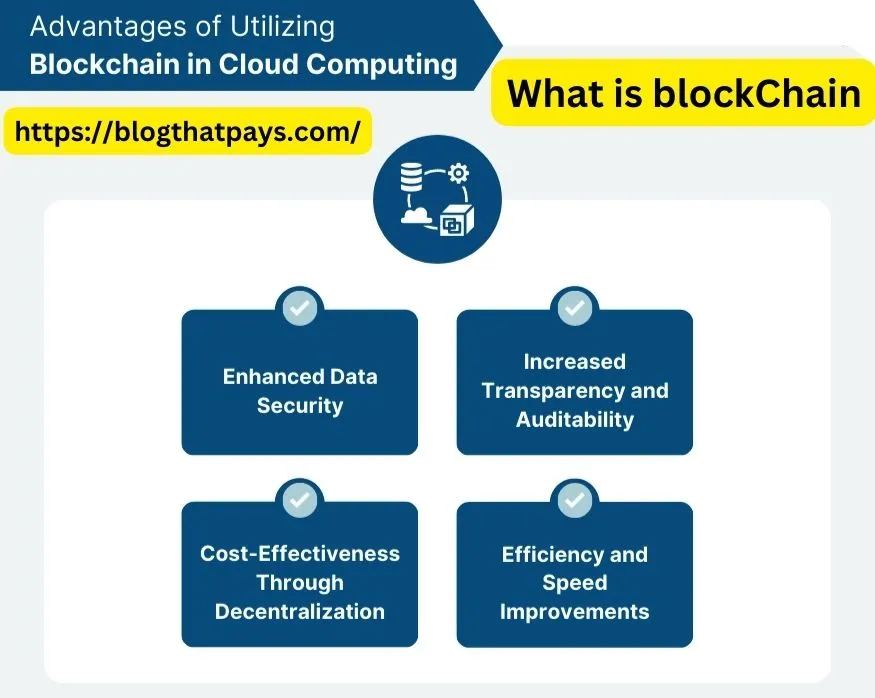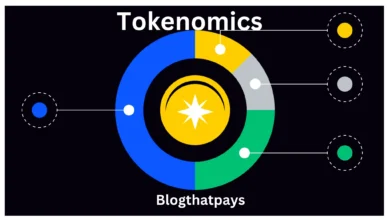What is Blockchain

Blockchain technology is a hot topic in today’s digital world. As a fundamental phenomenon breaking traditional boundaries, it has the potential to revolutionize various industries including finance, logistics, and supply chain management. But what exactly is blockchain, and how does it work? What is Blockchain: A Clear and Concise Explanation.
At its core, a blockchain is a decentralized, digital ledger that records transactions in a transparent, secure, and tamper-proof manner. It consists of a chain of blocks, with each block containing a finite set of transactions. When a new transaction occurs, it is verified by a network of computers, known as nodes, and added to the most recent block. Once a block is full, a new block is created and linked to the previous one using cryptography, thereby forming the “chain.”
The decentralized nature of blockchain technology eliminates single points of control or failure and ensures high levels of security, transparency, and trust among participants. This innovative approach to storing and managing data has inspired countless real-world applications, from cryptocurrencies like Bitcoin to smart contracts on the Ethereum network. As the understanding and use of blockchain technology continue to grow, it offers a promising future for various industries and applications.
Blockchain Fundamentals

Blockchain is a decentralized, transparent, and secure technology that allows users to store and transmit digital information. At its core, a blockchain consists of a series of blocks, each containing a set of transactions. These blocks are linked together using cryptography to form a continuous chain.
Decentralized Network
A key feature of blockchain is its decentralized nature. This means that no single entity or institution holds control over the network. Instead, it is maintained and updated by a vast network of computers, called nodes. This distributed structure helps to eliminate the risk of a single point of failure and ensures the security of the system.
Transparency and Security
Each block in the blockchain is made up of a set of transactions, and every transaction is recorded across the entire network. This provides full transparency, as anyone can access and verify the transaction data. To maintain security, the information is encrypted using cryptographic algorithms, making it nearly impossible for malicious actors to tamper with the data.
| Aspect | Description |
|---|---|
| Decentralized | No central authority; maintained by a network of nodes |
| Transparent | All transactions are recorded and accessible to all |
| Secure | Encrypted with advanced cryptographic algorithms |
Consensus Mechanisms
Blockchains typically use a consensus mechanism to validate new transactions and add them to the chain. These algorithms are crucial to ensuring the reliability and trustworthiness of the blockchain. Some common consensus mechanisms include Proof of Work (PoW) and Proof of Stake (PoS).
- Proof of Work: A process where nodes in the network validate transactions and create new blocks by solving complex mathematical problems.
- Proof of Stake: This method allows participants with a higher stake in the network’s native currency to validate and create new blocks, based on their proportionate holdings.
Immutability
Lastly, a fundamental principle of blockchain is immutability. Once a transaction is added to the blockchain, it cannot be altered or deleted. This is achieved through the use of complex hashing algorithms, which create unique digital fingerprints for each block. As these fingerprints are dependent on the contents of the block, any attempt to modify the data would result in a completely different fingerprint, ultimately making the system tamper-resistant.
In summary, blockchain technology’s fundamentals lie in decentralization, transparency, security, consensus mechanisms, and immutability. These core features form the foundation for various exciting applications, such as cryptocurrencies, smart contracts, and decentralized finance.
How Blockchain Works
Cryptography in Blockchain
Blockchain technology relies heavily on cryptography to ensure data integrity and security. Each block contains a cryptographic hash of the previous block, which creates a chain of blocks. The hash is derived from the block’s content, meaning any alteration would result in a different hash, thus breaking the link and alerting the network.
A Public Key Cryptography mechanism is also utilized, where each participant has a pair of keys – a public key and a private key. The public key is visible to all, while the private key must be kept secret. These keys are essential for securely conducting transactions.
Blockchain Network Structure
The structure of a blockchain network is fundamentally decentralized and is composed of nodes. Nodes store and maintain copies of the entire blockchain, What is Blockchain? thus ensuring no single point of failure. This decentralized network also prevents a centralized authority from controlling the system:
- Full nodes store and validate the entire blockchain history.
- Lightweight nodes only store a portion of the blockchain necessary for their transactions.
The blockchain network’s architecture can be further categorized into:
- Public Blockchains: Open to anyone, allowing users to read, write, or participate in the network.
- Private Blockchains: Restricted access controlled by a centralized entity.
- Consortium Blockchains: Controlled by a selected group of participants.
Consensus Mechanisms
A significant aspect of blockchain technology is the way consensus is achieved in the network. Consensus mechanisms are protocols that ensure participants agree on the blockchain’s state. Some popular consensus mechanisms include:
- Proof of Work (PoW): Participants (or miners) solve complex mathematical problems to validate transactions and create new blocks. This mechanism is energy-intensive and is used in networks such as Bitcoin.
- Proof of Stake (PoS): Participants validate transactions based on the number of tokens they hold, also known as their “stake”. This mechanism is less energy-intensive and adopted by networks like Ethereum 2.0.
- Delegated Proof of Stake (DPoS): Token holders delegate their right to validate transactions and create blocks to a select group of participants, allowing for faster transaction processing.
Smart Contracts
Smart Contracts are self-executing contracts with the terms of the agreement directly written into lines of code. They automatically execute when predetermined conditions are met. Smart Contracts have gained popularity, especially in decentralized applications (dApps), for their potential to automate various processes in a secure and tamper-proof manner. Ethereum is a pioneer in the implementation of Smart Contracts, providing developers with a platform to build a wide range of applications.
Types of Blockchains

Public Blockchains
Public blockchains are open-source networks that anyone can join, validate transactions, and engage in mining. They provide a high level of transparency and decentralization, as there is no central authority in control. Examples of public blockchains include Bitcoin and Ethereum. These networks are highly secure due to their proof-of-work consensus mechanisms, which require miners to solve complex mathematical problems to validate transactions.
However, public blockchains have trade-offs:
- Scalability: They can have limited transaction throughput, which could lead to congestion and higher transaction fees.
- Energy Consumption: The proof-of-work mechanism consumes a significant amount of energy, contributing to environmental concerns.
Private Blockchains
Private blockchains, also called permissioned blockchains, are closed networks where only selected participants can access and validate transactions. They are designed for businesses and organizations that need to maintain control and privacy within their ecosystems.
These blockchains offer:
- Faster transaction speeds: Due to their controlled environment and less computational power required to validate transactions.
- Privacy: Transactions are visible only to the authorized participants, ensuring confidentiality.
However, private blockchains lack the high level of decentralization and censorship resistance provided by public blockchains.
Consortium Blockchains
Consortium blockchains are a hybrid between public and private blockchains, where multiple organizations collaborate, forming a consortium to oversee the network. A set of pre-selected nodes manage the consensus process, offering the following benefits:
- Efficiency: Consortium blockchains can process transactions faster compared to public networks.
- Decentralization: While not as decentralized as public blockchains, they offer a higher level of trust as multiple organizations validate transactions.
- Customizable Privacy Levels: Consortiums can set various privacy levels to maintain confidentiality while sharing relevant information.
A well-known example of a consortium blockchain is the R3 Corda platform, used by financial institutions in trade finance and asset management.
Hybrid Blockchains
Hybrid blockchains combine the advantages of both public and private blockchains by allowing public access to certain parts of the network while keeping other parts restricted. They offer:
- Transparency: Public nodes can view specific transactions, while sensitive information is limited to private participants.
- Security: Decentralized public nodes add an extra layer of security to the network.
- Adaptability: Transaction control is customizable, and the network can evolve according to the needs of its users.
A notable example of hybrid blockchains is the Dragonchain platform, providing businesses with a secure and customizable blockchain solution.
Blockchain Technology Applications
Cryptocurrencies
Blockchain technology found its first application in cryptocurrencies, like Bitcoin. The decentralized nature of cryptocurrencies makes them secure and transparent, as each transaction is recorded on a distributed ledger.
- Bitcoin: The first cryptocurrency was introduced in 2009.
- Ethereum: Introduced in 2015, it enables the creation of smart contracts.
- Ripple: Allows for rapid and low-cost cross-border remittances.
Supply Chain Management
Blockchain can significantly optimize supply chain management by providing an immutable, transparent, and traceable record of every transaction within complex supply chains. Some key benefits include:
- Increased transparency
- Enhanced traceability
- Improved efficiency
| Company | Use Case |
|---|---|
| IBM and Maersk | Joint venture using blockchain to streamline shipping. |
| Walmart | Implementing blockchain for food safety and traceability. |
Voting Systems
Introducing blockchain-based voting systems could revolutionize the way elections are conducted. This technology offers the following advantages:
- Secure and tamper-proof voting records
- Reducing electoral fraud
- Simplified voting processes
Examples of initiatives in this field include:
- Voatz: A mobile voting platform using blockchain for security purposes.
- Follow My Vote: Aims to create a transparent and secure online voting system.
Decentralized Finance
Decentralized finance (DeFi) refers to a financial ecosystem built on blockchain technology, removing intermediaries like banks and financial institutions. Key attributes of DeFi are:
- Borderless access
- Increased transparency
- Enhanced security
Popular DeFi platforms include:
- MakerDAO: Allows users to generate stablecoins by depositing collateral.
- Compound: Offers lending and borrowing services directly on the blockchain.
Advantages of Blockchain

Blockchain technology offers numerous advantages that make it attractive to various industries and sectors.
Decentralization: Blockchain operates on a decentralized network, which means that no single entity controls all the data. This eliminates the risks associated with centralized systems, such as fraud, corruption, and data breaches.
Transparency: With blockchain, every transaction is made visible to the participants, making it impossible for parties to cheat or manipulate information. This level of transparency promotes trust and cooperation among users.
Security: Blockchain employs advanced cryptography techniques to ensure secure data storage. Furthermore, the network’s consensus mechanism makes it difficult for malicious actors to tamper with the data. As a result, blockchain offers an enhanced level of security compared to traditional systems.
Reduced costs: By eliminating intermediaries, blockchain technology can cut transaction costs and administrative expenses, fostering cost-effective solutions for businesses.
Immutability: Blockchain’s inherent design makes it virtually impossible for a participant to alter past transactions. This immutable characteristic ensures that data stored on the blockchain is always accurate and reliable.
Faster transaction times: Traditional systems often take hours, if not days, to process transactions. Blockchain, on the other hand, can significantly expedite this process by automatically validating transactions in real-time, saving both time and money.
To summarize, the advantages of blockchain technology include:
- Decentralization
- Transparency
- Security
- Reduced Costs
- Immutability
- Faster Transaction Times
These benefits make blockchain an attractive solution for various industries, such as finance, supply chain management, intellectual property protection, and more, thus paving the way for countless innovations and opportunities.
Challenges and Limitations
Scalability Issues
One of the primary challenges facing blockchain technology is scalability. As the number of users and transactions on a blockchain network increases, the system can become slow and congested, affecting its efficiency. Bitcoin and Ethereum, two prominent examples, have faced problems of slow transaction times and high fees during periods of increased activity.
Current solutions to scalability include:
- Off-chain transactions: Transactions are settled off the main blockchain to reduce system load.
- Sharding: This technique involves splitting the blockchain into separate parts, allowing transactions to be processed in parallel.
- Layer 2 solutions: These are additional layers built on top of a blockchain, like the Lightning Network for Bitcoin, to improve transaction speed.
Environmental Concerns
Blockchain networks, particularly those using the energy-intensive Proof of Work (PoW) consensus algorithm, have raised environmental concerns. PoW necessitates extensive computational power, consuming significant amounts of electricity. Bitcoin’s energy consumption, for example, has been compared to that of whole countries like Argentina.
Possible alternatives to PoW include:
- Proof of Stake (PoS): In PoS, validators are chosen to create new blocks based on the amount of cryptocurrency they hold and are willing to “stake.”
- Delegated Proof of Stake (DPoS): This method involves voting for a group of validators, thus strengthening network consensus.
- Proof of Authority (PoA): A more centralized approach in which a trusted group validates transactions.
Regulatory Framework
Lastly, the regulatory framework surrounding blockchain technology is still in development. Governments face challenges regulating a decentralized system, and uncertainties may deter businesses from adopting blockchain solutions. Some key regulatory concerns include:
- Legal status: Determining the legal status of cryptocurrencies and tokens, whether they are regarded as securities, commodities, or properties.
- Taxation: Defining rules for taxing digital assets, income generated from cryptocurrencies, and initial coin offerings (ICOs).
- Anti-money laundering (AML) and Know Your Customer (KYC): Implementing measures to prevent illegal activities, such as money laundering and fraud, and ensuring proper customer identification in digital transactions.
Although blockchain technology has demonstrated potential for revolutionizing various industries, addressing these challenges and limitations is crucial for its widespread adoption and success.
Future of Blockchain
As blockchain technology continues to evolve, various sectors are expected to benefit from its potential applications. In this section, we’ll briefly discuss some of the most promising developments that could transform industries such as finance, supply chain management, and AI.
Finance: Blockchain’s decentralized nature has the potential to revolutionize the financial industry. By eliminating intermediaries and facilitating secure, transparent transactions, blockchain can reshape global payments, remittances, and cross-border transactions. Digital currencies, such as Bitcoin and Ethereum, are proof-of-concept for such applications.
Supply Chain Management: Blockchain technology can provide real-time, transparent information on the origins and journey of products and services. This can enhance traceability, reduce fraud, and minimize inefficiencies in supply chains. Companies like IBM and Walmart have already started implementing blockchain to improve their supply chain systems.
The table below shows the potential impact of blockchain on different industries:
| Industry | Potential Impact |
|---|---|
| Finance | Decentralized finance; global payment solutions |
| Supply Chain Management | Enhanced traceability; reduced counterfeiting |
| Healthcare | Secure data sharing; improved tracking of medications |
| AI & Data Marketplaces | Decentralized AI models; democratized data access |
AI & Data Marketplaces: Blockchain can enable secure data sharing between AI models with less risk of data breaches. This can foster the development of decentralized AI platforms and data marketplaces that incentivize users to share their data in a secure, private manner.
While these developments show great promise, challenges remain in terms of scalability, energy consumption, and regulatory hurdles. Nonetheless, the potential of blockchain technology seems limitless, and we can expect many more innovative applications to emerge in the coming years.
Frequently Asked Questions
Q1- How does blockchain technology function?
Answer: Blockchain technology functions as a digital ledger to record transactions across a decentralized network of computers. All the recorded data is grouped into blocks, and each block is linked to the previous one, forming a chain. The network of computers verifies transactions and once confirmed, they cannot be altered or deleted, ensuring security and immutability.
Q2- In what ways is blockchain utilized within the cryptocurrency sphere?
Answer: Within the cryptocurrency sphere, blockchain is mainly utilized as the underlying technology powering digital currencies like Bitcoin and Ethereum. It enables the secure transfer of funds between parties, maintains a public ledger for transparency, and ensures anonymity for users by removing the need for traditional financial intermediaries such as banks.
Q3- Can you provide an example of a blockchain application?
Answer: An example of a blockchain application is the supply chain. By leveraging blockchain technology, supply chain systems can record product information at every stage, from production to the end consumer. This ensures transparency, traceability, and accountability, enabling businesses to track items with ease and prevent fraud or counterfeit products.
Q4- What are the different types of blockchain networks?
Answer: There are primarily three types of blockchain networks:
- Public blockchains: Open to anyone, these networks allow any individual to participate in verifying transactions and maintaining the network. Bitcoin and Ethereum are popular examples.
- Private blockchains: Restricted to specific organizations or individuals, private blockchains grant permission to only a certain group to verify transactions and maintain the network.
- Consortium blockchains: Controlled by a group of organizations, consortium blockchains provide shared control and decision-making power, usually for specific industry applications, such as interbank transaction settlements.
Q5- What role does a blockchain developer play?
Answer: A blockchain developer plays a crucial role in designing, implementing, and managing blockchain solutions for various industries and use cases. They work on developing smart contracts, creating decentralized applications (DApps), and enhancing the existing blockchain infrastructure. A developer also ensures security, scalability, and efficiency within the blockchain network.
Q6- How does blockchain technology differ from Bitcoin?
Answer: Blockchain technology is the foundational technology that underpins Bitcoin and other cryptocurrencies. Bitcoin is the first and most well-known application of blockchain, serving as a digital currency for peer-to-peer transactions. While Bitcoin showcases the potential of blockchain, the technology itself has other potential uses beyond cryptocurrency, such as supply chain management, voting systems, and identity management.







One Comment